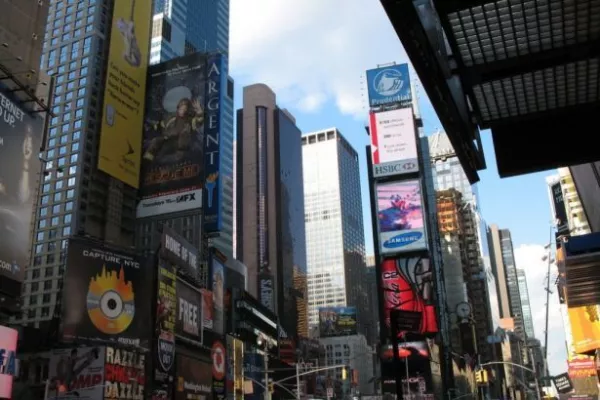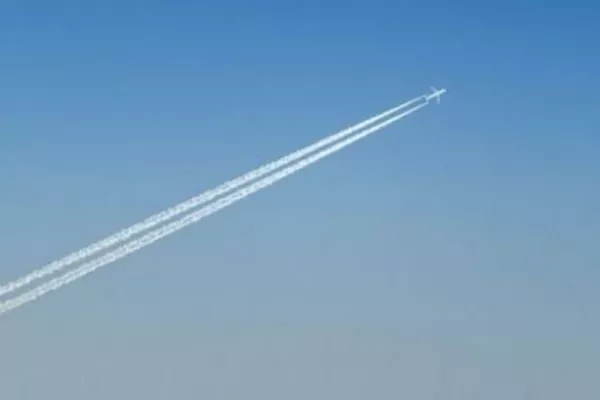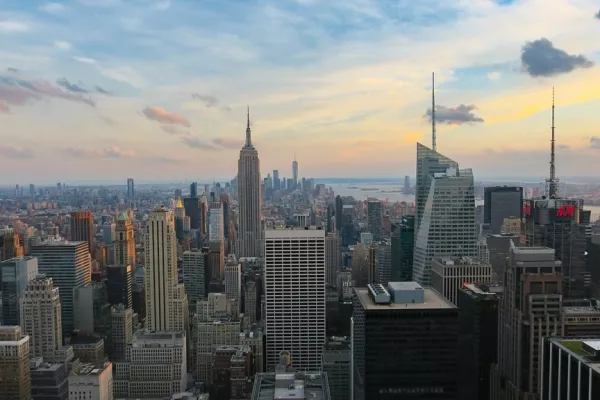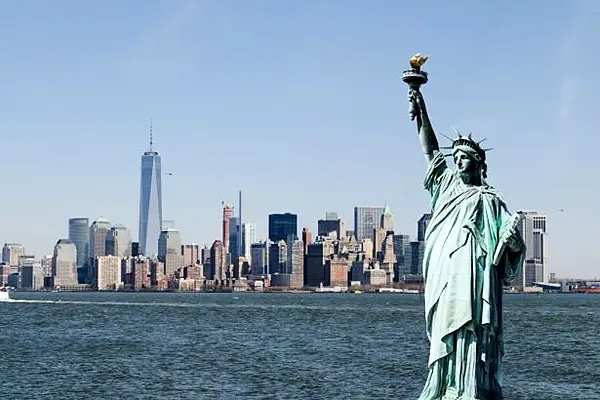If there’s a venture with a projected shelf life of five minutes, it’s a nightlife restaurant in New York’s Meatpacking District. The exception? Tao Downtown. Since it opened in 2013, with heavy wooden doors that look like they were airlifted in from an ancient Chinese fort, the temple to Pan-Asian-style food and drinks has been a prime Manhattan destination for athletes, celebrities, and businessmen and women waving corporate cards to out-of-town families.
Each night, some 1,200 people stream through the David Rockwell-designed, 22,000-square-foot, bi-level maze of dark wood-panelled rooms decorated with candles and giant Buddhas. The 300-seat dining room is massive by New York standards; the new Union Square Cafe, also designed by Rockwell, seats about 90. Tao Downtown estimates it did more than 220,000 covers (aka customers) in 2016 - significantly more than the population of Brooklyn’s Williamsburg neighborhood. There’s almost always a line to get into the adjoining nightclub.
According to an annual survey by Restaurant Business, Tao posted almost $34 million in food and beverage sales in 2016. That’s the highest-ranking spot for a non-chain restaurant in New York, and the third-highest in the US. What’s in first place? Tao Asian Bistro in Las Vegas, where total sales were just shy of $48 million. Third place is actually a decline for Tao Downtown; in 2015 the club claimed the list’s number 2 spot with $38 million in sales (this year, second place went to the venerable Joe’s Stone Crab in Miami). Even so, Tao Group dominates the 2016 list; another of its New York restaurants, Lavo, came in sixth with sales of $27.5 million. Tao Uptown, with $23 million in sales, came in 11.
In February, Tao Group announced a partnership with the Madison Square Garden Co, which acquired a 62.5 per cent stake in the company for $181 million. This month, industry insiders say Tao will also be taking over the space on the second floor of 130 E 57 Street that housed Frederick Lesort’s restaurant lounge Opia. Meanwhile, Tao itself is expanding: in April it will open its first locations in Los Angeles, a complex in the Dream Hotel in Hollywood. The group has plans for additional US cities and Asia, as well.
How does Tao stay ahead of the game and keep making money? Rich Wolf, one of Tao Group’s co-founders (along with Marc Packer, Noah Tepperberg, and Jason Strauss), gave me a behind-the-scenes tour of the place. He was joined by Tao Downtown’s general manager, Tony Oswain, and chef/partner Ralph Scamardella. Here are their secrets.
Be a One-Stop Shop
Rule number one at Tao: don’t give guests a reason to leave. Most people will spend at least a drink’s worth of time at the softly lit, brick-walled Ink Bar in what’s called the Eastern Mezzanine before heading down the grand staircase to a dining room, where a DJ spins in the background. Then they can move to the perennially packed club, where the roster of acts includes Tiësto, Lorde, Kanye West, Swizz Beatz, and the ubiquitous Questlove. It’s easier to gain entrance if you’re coming from dinner, the team confirms. Tao’s kitchen is open until 2 am; the club closes at 4.
The group will stay true to the formula at its coming Los Angeles home. The Dream Hotel will include Tao Asian Bistro, Beauty & Essex (another of its empire builders), and a brand-new concept, Luchini Pizzeria & Bar. Here’s how Wolf sees it: “We’ve built several concepts on one block - two restaurants, plus the Highlight Room on the roof with a club and a pool. You can take an Uber over in the afternoon, then roll from the pool to the restaurant to the club. And stay in the hotel if you don’t feel like going home.”
Create a Dining Destination
“The beauty of Tao is that you can order two sushi rolls or go all out and have an $800 live crab,” says Oswain. Most people don’t order that live crab: the average check is $75. Still, there’s an audience for pricier entrees, like a recent surf-and-turf special of Japanese wagyu with African prawns the size of lobsters. They sell for $150 each, and the restaurant usually processes 25 orders of the dish per night.
One fact that doubters overlook: the food at Tao is good. Scamardella makes regular trips to Hong Kong, Singapore, and Tokyo in search of inspiration. “People don’t come here for basic fried rice,” the chef says (he adds barbecue duck and lobster with kimchi to his). Scamardella calls his food “as chopstick-friendly as possible,” which makes diners more inclined to share and invariably pushes up cheque averages. The one dish you’ll find on almost every table is the $23 miso-glazed Chilean sea bass satay. “It’s the dish that built the empire,” says Wolf. Chef Scamardella estimates Tao Downtown sells 700 orders a night and goes through about 2,500 pounds of sea bass per week.
Embrace Convention
You won’t find a daily changing special at Tao; instead, Scamardella plans his menus ahead. “We don’t do specials based on what’s at the market or what we have left over,” he says. Rather, he orders ingredients such as Japanese beef way ahead to run as an off-the-menu. Conventions have a big effect on his calendars of specials. “In January they release the convention schedule,” Scamardella says. “If one of the big conventions is in town - the construction and concrete guys spend a lot of money - I know we’ll be having some big-ticket specials, and I order accordingly.”
Crowd Control
The Tao Group knows its audience, and it knows their schedules. Mondays and Tuesdays, the Tao Downtown crowd can comprise up to 80 per cent people with corporate cards, according to Wolf. “But it changes by the hour,” he notes. “As it gets later, the suits and ties disappear.” The biggest spending days are Wednesday and Thursday; Saturdays and Sundays are the lightest. “That’s the bridge-and-tunnel crowd,” says chef Scamardella. “People come in to celebrate, but they spend less money.”
Drinking Up
Alcohol makes up a little more than 50 per cent of Tao’s sales, a huge number compared with percentages in the 20s at most other places. Ryan Arnold, wine director of the Chicago-based Lettuce Entertain You restaurant group, puts it into perspective: “Tao’s drinks numbers are insane. They’re the stuff of legend in the restaurant world. At our places, I’m happy when I see alcohol percentage in the mid-20s. I dream about a number like 32 per cent.” Drinks in Tao’s bar and restaurant, like the best-selling vodka-based Ruby Red Dragon or the Tao-tini, cost $17 - not an outrageous price, at least by the standards of New York cocktail lounges. How are they hitting their mark? The sheer volume helps - these are crowd-pleasing, guzzler-style beverages - as do club sales: drinks are closer to $20 there, and bottle service ranges from about $250 to $290 a person.
Avoid Undesirable Associations
Wolf is adamant about one thing: Tao Downtown is not technically in the Meatpacking District, where the official northern boundary is 14 Street (Tao is on 16, just off Ninth Avenue). Tao benefits from first-time visitors who are headed to the neighbourhood to party, as well as from regulars who know it’s easy to get to. “The Meatpacking District is a quagmire,” says Wolf. “You get stuck in it, and you say, ‘I’m not going back there.’ Tao is easy in and easy out.”
The Celebrity Factor
“Capital didn’t have a lot to do with it,” Wolf says about the recent deal with Madison Square Garden. “A lot of our venues are driven by celebrities. If someone has a concert at MSG, they’ll come here to party. Plus there’s synergy. MSG has venues all over the place. They’re building an arena in Vegas near the Sands. Imagine what can happen at Marquee.” Following the LA opening, Tao has deals in place at the Sands in Singapore, where the group will open a nightclub and a couple of restaurants in 18 months. And the co-founders are employing their hub strategy elsewhere in the US. In early 2018 they’ll open a Tao and a new concept in Chicago. Further into the future? “Miami is probably the only other US city we’d look at,” says Wolf.
News by Bloomberg, edited by Hospitality Ireland









